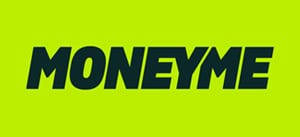Getting the best car insurance for your needs as a P-plater in Australia is all about knowing where to look. Even if new drivers are perceived as a greater risk due to less experience on the road, it’s still crucial to compare a variety of offers before signing up to an insurance policy.
By comparing online, you can quickly and easily weigh up policies, coverage options and prices to help you make an informed decision about which is the best possible policy for your needs.
Why compare car insurance policies through Savvy?
100% free comparisons
There's no need for you to pay a cent to compare a variety of competitive policies side-by-side.
Any time, anywhere
Because all our tools are available online, you can compare car insurance policies no matter where you live, day or night.
Reputable partners
We're partnered with Compare the Market to help our customers lock in the best deal tailored to their needs.
Providers you can compare































How much will my car insurance policy cost as a P-plater?
The cost of car insurance as a P-plater in Australia can vary depending on several factors. However, in general, you’ll face higher premiums due to your inexperience on the road compared to those with a full licence who have been driving for a long time.
Aside from your age and experience, some of the factors which can impact the cost of your policy include:
- Type of vehicle: the make and model of your car can influence your premium, as some cars are more expensive to repair or replace or are more likely to be stolen.
- Your driving record: a history of accidents, claims or traffic offences can increase your premium, as you’ll be seen as posing a greater risk of getting in an accident and claiming again.
- Where you live: your postcode can affect your premium, as some areas have higher rates of accidents, theft or vandalism. Additionally, different states present different risk factors, such as Queensland compared to South Australia.
- How you use your car: the more you drive, the higher the risk, which can increase your premium. If you catch the bus into work or university every day, your premiums may not be as high.
- Excess: increasing your excess can lower your premium, but it means you'll pay more out of pocket if you make a claim.
- Insurance type: as mentioned, comprehensive cover is typically more expensive than third party insurance, as it provides more protection for your car.
- Special car insurance offers: some insurers may offer discounts to drivers who sign up during a certain window or those who go a long time without making a claim, so each of these may impact your policy’s price.
Can I be covered under my parents’ car insurance as a P-plater?
It’s possible for you to be covered under your parents’ car insurance policy as a P-plater, provided you’re listed as a driver on the policy. However, it's important to note that this only applies if you’re primarily driving the family car, rather than your own. Should you own a vehicle yourself, you’ll need to purchase insurance to cover it separate from your parents’ policy.
Being added to their policy may also result in an increase in their premiums due to the added risk of having a young and inexperienced driver on the policy, which is generally the case for drivers under 25. It's also worth checking with the insurance provider whether they have any specific rules or requirements for insuring P-platers on a policy, such as an age limit on children of the policyholder.
How to compare car insurance policies for P-platers
-
Premiums
When comparing car insurance policies as a P-plater, it's important to consider the premiums being offered by different providers, as doing so will help you work out which policy is the best for your needs within your budget. It's important to remember that the cheapest policy may not always be the best option, so you should compare based on more than just cost.
-
Excess requirements
Another important factor to consider when comparing car insurance policies is the excess requirements. An excess is the amount you have to pay towards a claim before your insurance policy kicks in. Excesses are generally higher for P-platers, but this may not always be the case. It's important to choose a policy with an excess you can afford, as you don't want to be left struggling if you need to make a claim.
-
Available bonuses
Many car insurance policies offer bonuses such as no-claims discounts or rewards for safe driving. It's important to consider the available bonuses when comparing policies, as these can help you save money over the long term. For example, a no-claims bonus can help reduce your premiums over time, while a reward for safe driving can incentivise you to drive more responsibly.
-
Optional extras
Car insurance policies may also offer optional extras such as roadside assistance, rental car coverage or no-excess windshield replacement. It's important to consider these options when comparing policies, as they can be useful in the event of an accident or breakdown. However, it's also important to remember that these extras can come at an additional cost, so you should weigh up the benefits against the price.
-
Coverage and exclusions
It's crucial to consider the coverage and exclusions offered by different car insurance policies when comparing them as a P-plater. Not all insurers will offer the same inclusions, exclusions (such as engine failure) and limits, so it's important to look for a policy which provides adequate coverage for your needs and read the product disclosure statement (PDS) carefully to ensure you understand any exclusions or limitations which may apply.
Types of car insurance
How to buy car insurance
-
Fill out an online quote form
To generate relevant quotes, you’ll need to provide information about yourself, your car and the cover you’re after. This quote form is simple and should only take minutes to complete.
-
Compare offers
Once you’ve done this, you’ll be able to compare personalised quotes based on premiums, inclusions, exclusions, claims process, excess, optional extras and more in minutes.
-
Pick one you like and buy it
If you find a policy you’re happy with, you can complete your car insurance purchase through our partner's website. Once bought, your cover can kick in as soon as today.













